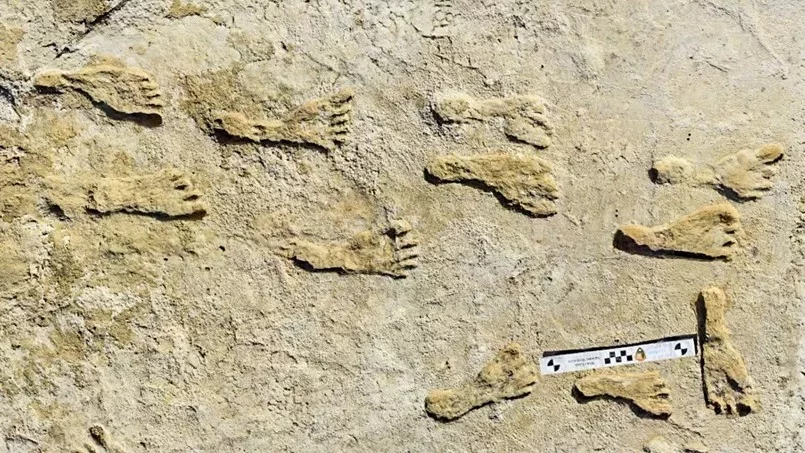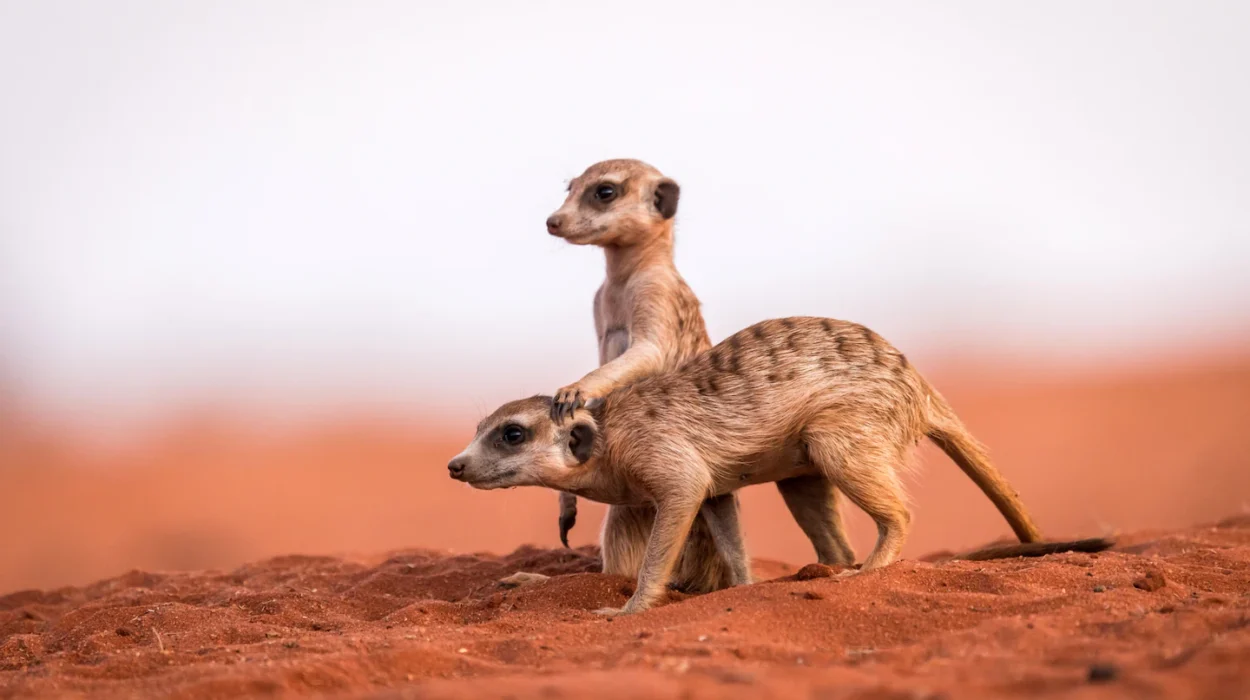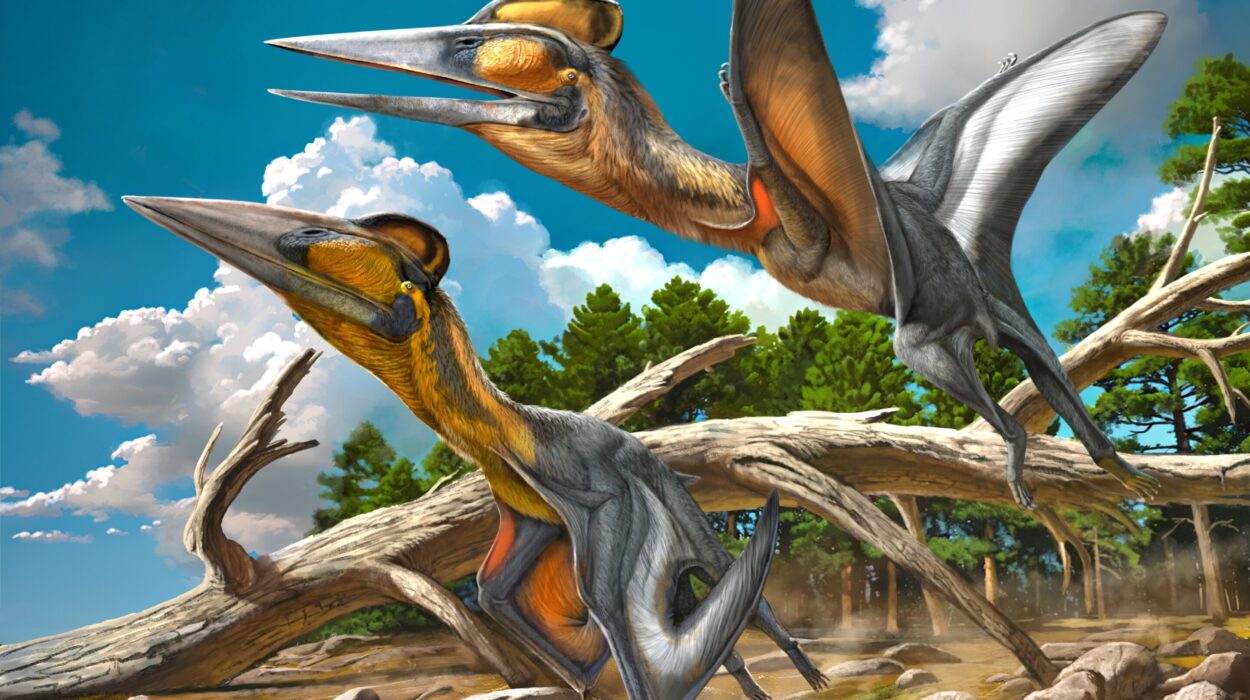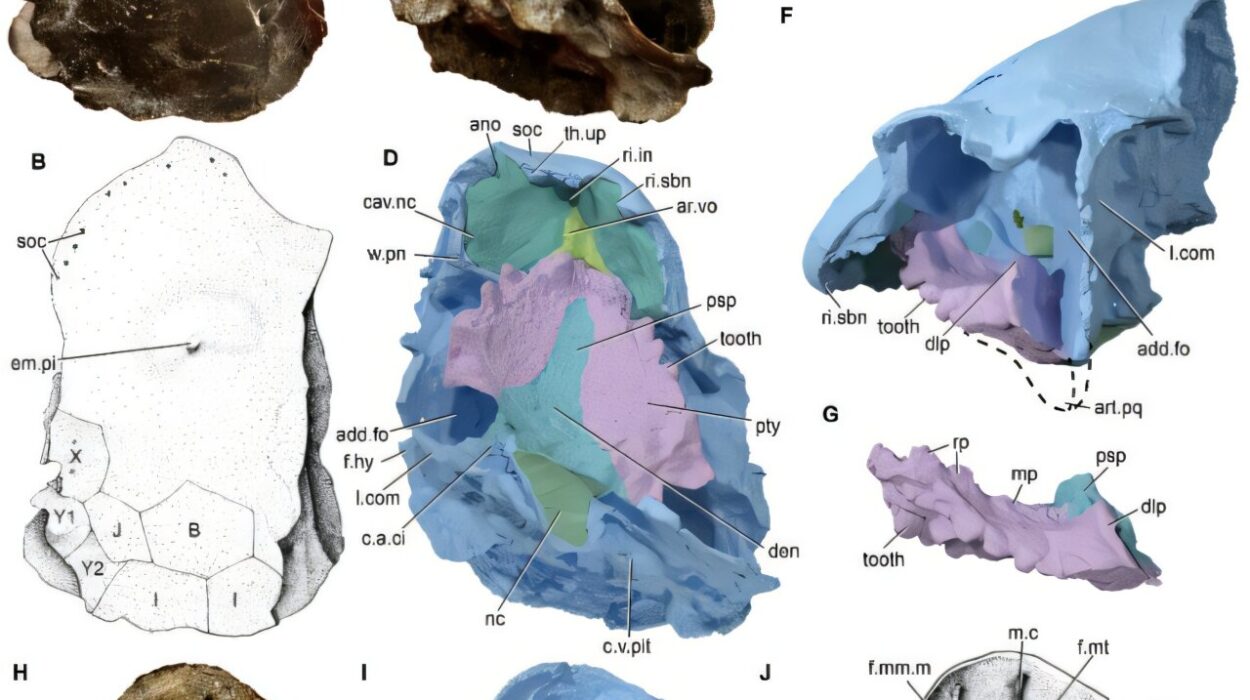Long after bones crumble to dust, after skin and sinew are lost to time, there can still remain—faint and sunken into ancient stone—a footprint. Silent, solitary, yet speaking volumes. Fossilized footprints, or “trace fossils,” are not merely imprints of prehistoric toes or talons. They are intimate records of a fleeting moment, preserved for eternity. They are the breathless pauses in life’s ancient choreography—the whispered evidence that something lived, moved, and left a trail behind.
To stand before one is to feel the ghosts of the past press against your chest. The weight of time, the immensity of what has been lost, and the subtle triumph of what remains converge. These footprints are the unscripted diary entries of Earth’s bygone wanderers. They do not lie in museum cabinets like bones, static and arranged; they are etched into riverbeds and desert flats, arresting in their spontaneity. And what they reveal is not just who walked where—but how they lived, how they moved, and how they responded to the world around them.
Trace Fossils vs. Body Fossils: Understanding the Difference
To fully appreciate what fossilized footprints can reveal, we must first understand the broader world of fossils. Most people think of fossils as the hardened remains of once-living organisms: skulls, ribcages, teeth, and claws. These are body fossils, and they offer invaluable information about the structure and biology of extinct life.
But another category of fossil tells a different story—trace fossils, also known as ichnofossils. These are not parts of the organism itself but records of its behavior. Trace fossils include footprints, burrows, nests, feces (coprolites), tooth marks, and even resting impressions. They are not the creature—they are what the creature did.
Fossilized footprints are among the most evocative of these trace fossils. Each step captures a single instant, but when strung together in a trackway, they can read like a paragraph from the deep past. From a single sequence of prints, scientists can estimate size, stride, speed, gait, and even behavioral nuances like limping, running, hunting, or fleeing.
The Art of Preservation: How Footprints Become Fossils
For something as ephemeral as a footprint to survive millions of years, an exquisite dance of chance and geology must occur. First, the organism must step into a substrate capable of recording detail—usually wet mud, fine sand, or volcanic ash. Then, this impression must be rapidly covered by another layer of sediment, protecting it from erosion. Over time, with pressure and mineralization, these layers harden into rock. If luck holds, the footprint remains intact, waiting to be discovered.
This process, though rare, has occurred countless times across Earth’s history. From dinosaur tracks in North America to the delicate impressions of trilobites in Cambrian sea floors, the Earth’s crust is etched with the memory of movement. Some sites, like the Laetoli footprints in Tanzania or the Paluxy River tracks in Texas, offer entire trackways—moments frozen in mid-action, like ancient time-lapse photography.
Each preserved track represents not just the preservation of form, but of circumstance. It captures a moment when all elements aligned—biology, weather, geology, and chance. And therein lies its power. A bone tells us what a creature was. A footprint tells us what it was doing.
The Laetoli Footprints: Humanity’s First Steps
Perhaps the most famous fossilized footprints ever found are those uncovered in Laetoli, Tanzania, by Mary Leakey in 1978. Embedded in volcanic ash nearly 3.7 million years old, the prints were made by early hominins—likely Australopithecus afarensis, the same species as the famed “Lucy.”
What these footprints revealed stunned the world. There were three sets, walking upright. Their stride and arch suggested a human-like gait, long before Homo sapiens appeared. The prints showed a bipedal creature with a rolling walk, a forward-pointing big toe, and a pace suggesting deliberate locomotion. One print even overlapped another—perhaps a child walking in the footsteps of an adult.
This was not just evidence of anatomy. It was a narrative. It told us that upright walking was established millions of years before our species, that it occurred in social groups, and that the transition from tree to ground had already begun.
More emotionally, the Laetoli footprints provide something rare: intimacy. These were not bones in a box. These were paths across a landscape. You could stand beside them and match your stride, foot for foot, across time. The past, here, is not abstract. It walks beside us.
Dinosaurs in Motion: The Language of Trackways
While fossilized bones offer insight into the size and structure of dinosaurs, it’s their footprints that truly bring them to life. In the American West, in parts of China, and scattered across Europe and Australia, sprawling dinosaur trackways stretch across ancient riverbeds and floodplains.
From these, paleontologists have gleaned remarkable insights. The spacing between prints can be used to estimate speed. A tight group of similar prints might suggest herd behavior. Overlapping or intersecting paths may indicate pursuit, migration, or social interaction.
In the Paluxy River in Texas, some dinosaur trackways appear to show theropods (meat-eaters like Acrocanthosaurus) following sauropods (long-necked herbivores like Sauroposeidon), hinting at predator-prey dynamics. In other sites, the presence of multiple trackways of the same species side-by-side suggests dinosaurs may have traveled in packs or family groups, challenging the outdated image of solitary giants.
One astonishing discovery in Spain revealed a trail of a large theropod making sharp turns and changes in pace—possibly engaging in pursuit or reacting to an obstacle. The trackway was not just static; it was dynamic. It showed decision-making, alertness, adaptation.
These footprints rewrite what we thought we knew about dinosaurs. They show they were not sluggish reptiles, but nimble, coordinated, and socially complex beings. The world they walked through was vibrant and reactive—not a silent tableau, but a living, breathing ecosystem.
Behavior Etched in Stone
Beyond locomotion, fossilized footprints can reveal behaviors as diverse as parenting, resting, feeding, or fleeing. In some track sites, like those in Australia’s Lark Quarry, thousands of small theropod and ornithopod footprints seem to scatter in chaotic patterns, as though the creatures had been startled into a frenzied stampede. What could have provoked such panic? One interpretation is the sudden arrival of a predator—possibly a large theropod—which may also be represented by a separate set of deeper, more widely spaced prints.
Elsewhere, paleontologists have found what may be the impressions of dinosaur bellies and tails, suggesting where they lay down to rest. In one instance, tracks of a sauropod begin deeply and then gradually lighten, as though the creature was climbing a slope and then descending, adjusting its gait accordingly.
Some tracks show limping—uneven step distances and pressure patterns implying injury. Others show what appear to be mothers walking with juveniles, their smaller prints protected within the stride of the adult.
Incredibly, trackways can even suggest play. In some pterosaur tracks from ancient tidal flats, the winged reptiles seem to have repeatedly lifted off and landed, leaving alternating prints and drag marks, as though practicing flight or interacting with one another.
Each footprint is a word. Each trackway is a sentence. Together, they form the unspoken grammar of ancient life.
The Early Tetrapods and the Great Transition
One of the most profound chapters in Earth’s history is the transition from sea to land. It was a moment when vertebrates—creatures with backbones—first dared to leave the oceans and walk on land. For years, fossils of creatures like Tiktaalik and Ichthyostega hinted at this transition. But it was footprints, not bones, that finally moved the date of this monumental shift even earlier.
In 2010, scientists discovered fossilized footprints in Poland dated to around 395 million years ago—nearly 20 million years older than the earliest known body fossils of land-walking vertebrates. These prints, preserved in what was once a coastal lagoon, showed creatures with distinct digits—feet—not fins—walking across the mud.
The implications were seismic. Not only had vertebrates ventured onto land earlier than we thought, but their anatomical evolution had also been underestimated. These were not flailing proto-limbs—they were purposeful strides.
Once again, footprints had rewritten the timeline. They had revealed not just the form of ancient life, but its ambition—to push into new environments, to test the unknown.
Human Ancestors and the Footsteps of Evolution
Besides Laetoli, other hominin footprints have been found that shed light on the evolving story of human movement and social structure. In Kenya’s Ileret site, over 20 footprints dated to 1.5 million years ago revealed that early Homo erectus walked upright in a manner nearly indistinguishable from modern humans.
The prints suggested arch development, toe alignment, and even group travel. These individuals walked side-by-side in the same direction—perhaps a hunting party, a family group, or travelers migrating together.
In these footprints, we see the earliest echoes of modern human behavior: community, mobility, coordination. They tell us that walking is more than a mode of movement—it is a social act, a journey not just across geography, but through time and evolution.
The Emotional Resonance of Footprints
There is a peculiar emotional power in fossilized footprints. Bones are scientific artifacts, undeniably profound, but often impersonal. Footprints, on the other hand, feel almost ghostly. They are ephemeral and intimate. You can stand in them. You can place your own foot beside theirs. They shrink the chasm of time into something graspable.
They speak to our own love of motion, our own understanding of pace, struggle, migration, and companionship. A footprint implies presence. It implies a being that once lived and moved with intent. They offer a momentary bridge between us and the creatures we can never meet.
When you look at a fossilized footprint, you are looking at a moment of life that is both irretrievably past and strangely immediate. You’re not just seeing where they were—you’re seeing what they were doing, how they felt, how they moved, and sometimes, how they died.
The Challenges of Interpretation
Despite their evocative nature, fossilized footprints can also be notoriously difficult to interpret. The same print might appear differently based on the depth of mud, the angle of the step, or subsequent erosion. A footprint can be distorted by collapse, washed out by tides, or overlain by other prints.
Assigning a footprint to a specific species is also challenging, especially when no bones are nearby. Some ichnofossils are given their own names—independent of species—like Grallator, a three-toed print made by small theropods. But Grallator could have been made by several different dinosaur species.
Still, as methods improve—using 3D imaging, machine learning, and biomechanical modeling—scientists are gaining better tools for interpreting these fossilized stories. Each print becomes a data point in a larger pattern, allowing for richer, more nuanced reconstructions of prehistoric behavior.
A Story Still Unfolding
New fossilized footprints are discovered every year, in deserts, cliffsides, riverbeds, and seafloors. Some are still buried, waiting to be uncovered by erosion or human curiosity. Others have been lost forever, destroyed by natural processes or human activity.
But the potential of trace fossils remains boundless. They tell the stories that bones cannot. They capture not just death, but life in motion. They whisper of migration routes, seasonal changes, emotional responses, parenting behaviors, and social bonds. They are snapshots of activity—a universal language across eons.
As long as we keep listening, the Earth will continue to speak through its footprints.
Walking with Shadows
To trace your fingers along a fossilized footprint is to touch the past in its most fragile form. These are not just marks in stone—they are the lingering echoes of footsteps that once rang out over wet ground, over sand and ash, now hardened into time.
We walk with them. They walk with us.
And as long as their prints remain, so too does their story—written not in words, but in the language of steps, striding endlessly through the corridors of Earth’s vast memory.






